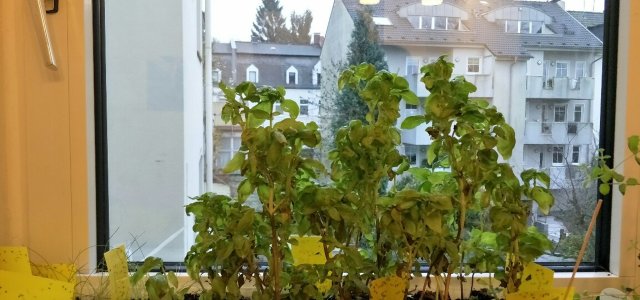
You can fight fungus gnats with natural means. We show you how to get rid of the flies in the soil and how to prevent fungus gnats in the future.
If the plants are outside on the balcony over the summer, there is no sign of fungus gnats. It is not until winter that the gnats infest herbs and flowers indoors. The problem: indoors they have no natural predators and multiply to a large population within a few days. In such a case, you should act quickly and fight the fungus gnats. How to do that, you will learn in this article.
Fighting fungus gnats: Where do the flies come from?
The culprit is usually poor-quality plant soil, which is an ideal breeding ground for fungus gnats. When the soil is moist, the little flies can multiply especially well. You should definitely fight the fungus gnats, because otherwise they will destroy your plants. They first feed on the roots of the plant and then eat their way up. In the worst case, they hollow out the entire stem and the plant dies.
With the following tips, you can control fungus gnats – right on the plant.
How can you fight fungus gnats in the potting soil?

The most animal-friendly option: give a lot of sand over the soil and do not water the plant for at least four weeks. This is because if the soil is dry, the larvae will not hatch and no new fungus gnats will come. The old fungus gnats die naturally after a few days.
Establish natural predators: You can also get natural predators of the fungus gnat in your flower pot or window box. So-called nematodes (available e.g. from **Amazon) feed on fungus gnats and thus fight the small flies quite naturally.
However, it takes about 14 days for the nematodes to eliminate all the fungus fly larvae. Gardeners recommend keeping the soil moist at all times so that the nematodes have ideal conditions. After a few weeks, the nematodes then die naturally.
Quick & dirty: If you are not afraid of contact, you can also place yellow cards next to the plants. The yellow color of the plastic cards (unfortunately they are only available in plastic) attracts the flies and they then stick to the adhesive. After only one or two days, most of them will stick to the yellow boards and you can replace them. You have to leave the boards hanging or replace them with new ones until the last larvae of the fungus gnats have hatched and are attached to them. Note, however, that the yellow panels with wriggling flies on them are not for animal lovers. Yellow boards are available in hardware stores or garden stores as well as online, for example, at **Amazon.
How to prevent fungus gnats in the future
So that you have less worries with your plants in the future, we have put together five tips against fungus gnats:
- Only use high-quality soil from the nursery. This reduces the risk of fungus gnats.
- To make the soil sterile, you can put it in the microwave for a minute. Of course, this only works for a smaller amount of soil.
- Water only as much as necessary in the winter. Most plants reduce their growth in winter anyway and need less water.
- A layer of sand over the soil will protect the plants from fungus gnats. This is because the small flies only ever lay their larvae directly on the soil.
- If you have problems with fungus gnats very often, you can pull an old fine-mesh pantyhose around the plant. You then have a plant in the tights, so to speak. This way the fungus gnats can’t lay their larvae on the soil because it is protected by the pantyhose.

